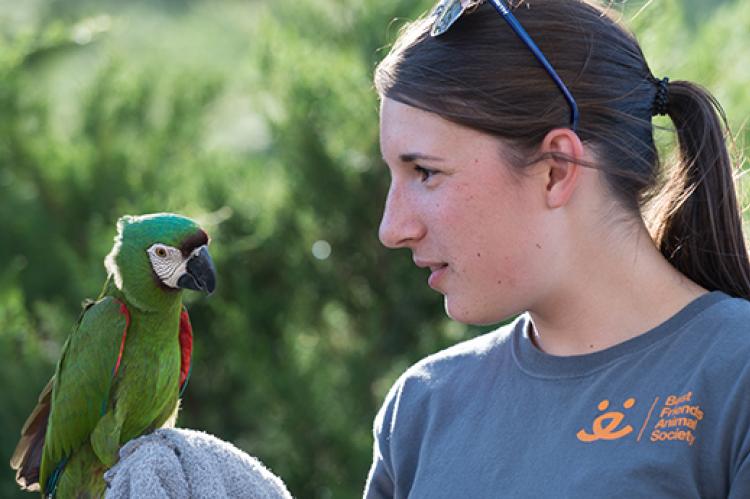Bird Training: Understanding the Basics

There's a lot of misinformation about animal behavior and training in general — and especially for bird training. Many people believe that certain behaviors in pet parrots — such as biting, screaming, destroying furniture, only liking one person, or refusing to eat certain foods — arise because the birds are wild animals and cannot help it or because they are mean, lazy, or dominant.
Nothing could be further from the truth. All behavior is functional. Parrots behave the way they do because at some point in their lives they learned that it works, and it keeps on working. Alternately, they don’t behave in other ways that we want them to because they never learned how to do so. To be good caregivers, we must accept that it’s our responsibility to learn how to train birds to live successfully in our environment, just as it is a dog person’s responsibility to train their dog not to bark all the time, bite, jump on people, or chew the furniture.
Birds are highly intelligent and can pick up cues quite quickly, which can make training your bird an easy and rewarding endeavor. Here are some tips to get you started with training your bird.
The best bird training methods
There are many theories about how to train animals. But through the scientific study of behavior we have learned that the best methods meet the three E’s:
- Is it effective? (Does the training method work?)
- Is it ethical? (Does the training method avoid causing physical, mental, and/or emotional damage?)
- Is it empowering? (Does the training method enable the learner to make decisions about and changes to their environment?)
In other words, bird training methods that incorporate force, dominance, or punishment might be effective, but they are neither ethical nor empowering. Conversely, absolute permissiveness — allowing the learner to do whatever they want — may be ethical, but it certainly isn’t effective and may or may not be empowering.
Positive reinforcement training for birds
All three E’s can be met through the scientific approach to behavior called applied behavior analysis — more commonly known as positive reinforcement training. The foundational principles of applied behavior analysis are:
- Rather than assuming whom the learner is, we describe specifically what the learner does.
- We are objective rather than subjective. Instead of saying “This bird is mean,” we say “When I put my hand near the bird, the bird bites it.”
- Rather than telling the learner what not to do, we teach them what to do.
- Instead of immediately scolding or suppressing a behavior we don’t like, we show the bird how to do a more desirable behavior instead.
- Rather than forcing the learner to bend to our will, we empower the learner to make the desired decision of their own free will.
- Instead of forcefully handling a bird to get them to do what we want, we teach the bird to perform the desired behavior voluntarily.
Knowing these principles is the first step in bird training. In addition, successful training is a two-way conversation, rather than a one-way ultimatum. To have meaningful and productive conversations with your bird, you need to be able to understand what your bird is telling you and make yourself understood to your bird. This means reading your bird’s body language.
Learning how to train in this way often requires instruction and guidance from an avian professional. Consult your avian veterinarian for help with your individual situation; your vet also might be able to refer you to a behavior consultant in your area.